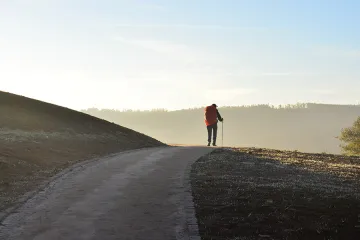Dubrovnik, Croatia, Mar 10, 2024 / 06:00 am
Since the Middle Ages, a great number of ancient roads throughout Europe have led to Santiago de Compostela (St. James of Compostela) — a shrine in Spain dedicated to St. James the Apostle and the destination of 1 million pilgrims every year. Unbeknownst to many, Croatia boasts one of those ancient routes leading to the famous shrine.
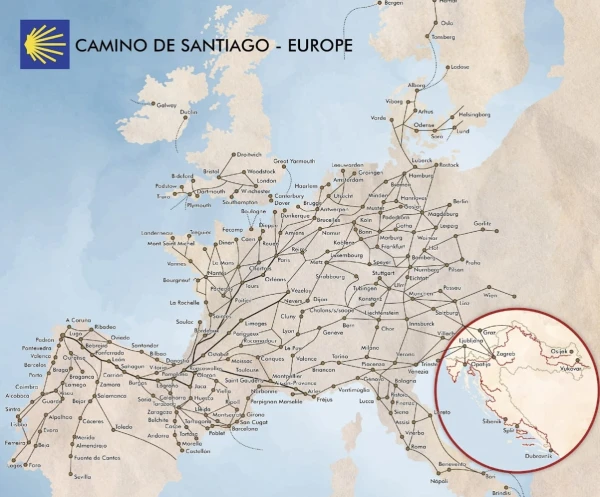
Officially registered in 2015, the Confraternity of St. James in Croatia began to promote the country’s pilgrimage route, which covers 3,000 kilometers (more than 1,850 miles). It’s called “Camino Croatia.”
“In the beginning, we didn’t know we would be walking in the footsteps of our medieval ancestors,” said Vedran Prazen, the secretary of the confraternity.
Prazen says he and other interested citizens began doing research and found that there were people who were walking to Santiago de Compostela from Croatia back in the early 1300s.
“Records date to 1203. And we found proof of annual meetings of the Confraternity of St. James from the 15th and 14th centuries,” Prazen told CNA.
However, despite the fact that Croatia had such a long-standing tradition, the country was barely included in the “Spanish pilgrim passport” — the document souvenir that is stamped at each overnight stay of a Santiago pilgrimage.
“On the map of Europe crisscrossing the routes of St. James, we were one of the few countries in Europe that did not have the modern Camino routes,” Prazen said.
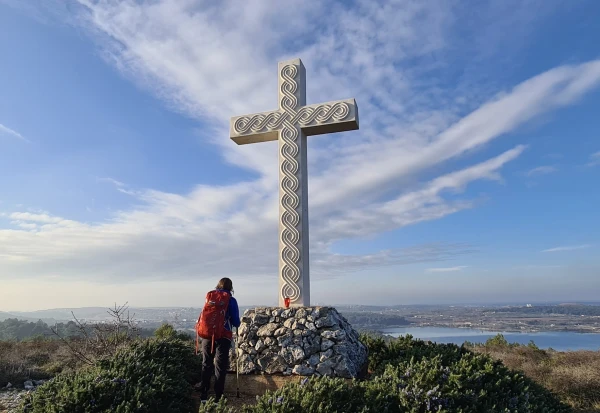
The Camino’s rise in popularity
The revival of the Way of St. James (known more commonly as “the Camino”) started in the late 1970s, when the roads of the pilgrimage were almost forgotten after being shut by war with Spain.
Pope John Paul II helped to popularize the Camino when he visited Santiago de Compostela in 1982. A few years later, in 1989, he organized the World Youth Day in Santiago, where he even walked a couple of kilometers himself to the basilica.
The Way of St. James has spread ever since. Over the past few decades, there have been books written and movies made, giving even more visibility to this popular pilgrimage.
Restoring ‘Camino Croatia’
The Confraternity of St. James in Croatia began to reestablish these routes, setting up the project “Camino Croatia.” The first step, Prazen said, was to “map all the church[es] and shrines dedicated to Santiago in Croatia,” drawing roads from different directions of the country, to reach Santiago. The total distance was estimated at about 3,000 kilometers (1,864 miles).
Then the confraternity — which today counts 42 members, all volunteers — began restoring the old medieval roads, putting up signs and organizing pilgrim infrastructures. A great number of local tourist boards helped finance this huge project, half of which has now been completed.
(Story continues below)
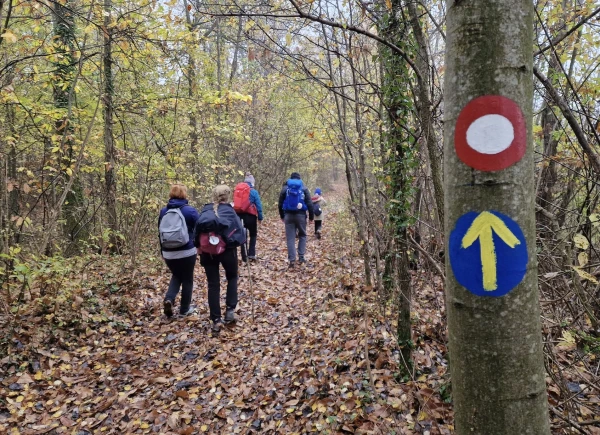
The initiative is already a success.
“Last year we had over 5,000 people who walked the Camino in Croatia. The majority were Croatians, but we also had people from South Africa, Portugal, Canada, the U.S., Australia, and from all over Europe,” Prazen said.
“We didn’t want just to get another road which only a few hundred people would walk, we wanted to promote the Camino experience to a much greater audience,” insisted Prazen, who became the project manager of Camino Croatia.
Connecting with strangers
So what is the Camino Croatia experience like?
“Speaking as a Catholic, the Way of St. James is a pilgrimage, but it’s much more than that,” Prazen explained. “The Camino attracts everybody — atheists, agnostics, Muslims, Buddhists, people of all faiths and of no faith. The experience that it provides is a deep experience based on something inherent in all human beings and expressed in the words of St. Augustine: ‘Our souls are restless, Lord, until they rest in you.’”
“On the Camino, you live the Gospel values, not because somebody told you, not because you read it, but simply because while you are here, these are very natural behaviors.”
Even where there is no premium lodging, and there are waiting lines for the restroom, Prazen noted that there is an “interesting kind of harmony amongst pilgrims.”
“It’s easy to establish connections, deep bonds with other human beings — even complete strangers — that you have just met for five minutes. It’s as if on the Camino, everybody is the best version of themselves,” he said.
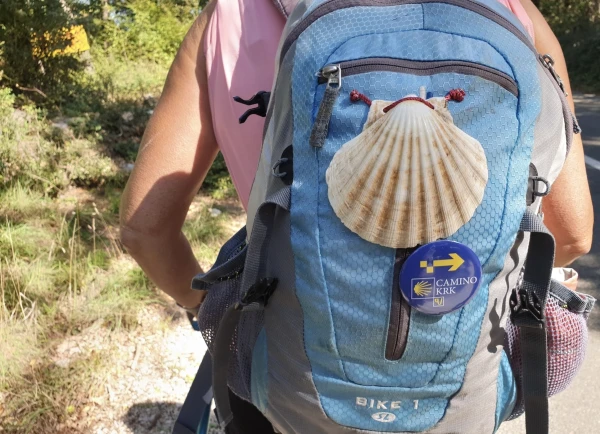
Living in the present moment
Prazen said the Camino helps us “to live in the present moment.”
“We tend to obsess about the past, particularly past mistakes, and to worry about the future. On the Camino we worry not about what tomorrow brings.”
He remembered that on his first Camino, after two weeks of walking four kilometers per hour, he was taken in a car to a nearby village for Mass. “I was suddenly at 80 kilometers per hour… and I started to think that our bodies and our minds are designed to live four kilometers per hour, not 100 kilometers per hour the way we live with emails, phones, messages, tasks, jobs, responsibilities — it’s simply too much.”
On the Way of St. James, Prazen said, “you live very natural, you eat what you eat, you sleep what you sleep, you walk, you have very simple tasks, just get up, start walking from one point to the next point. And it’s so mentally refreshing, so cleansing.”
The experience of God
For Prazen, the Camino is also a religious experience. He has witnessed many people who began walking as atheists or as tourists and who ended up as pilgrims and believers.
The Camino of Santiago is “one way to help bring people to God, a way which doesn’t act as a structure or an instruction, but which helps people find their own path, to come to their conclusions,” he said.
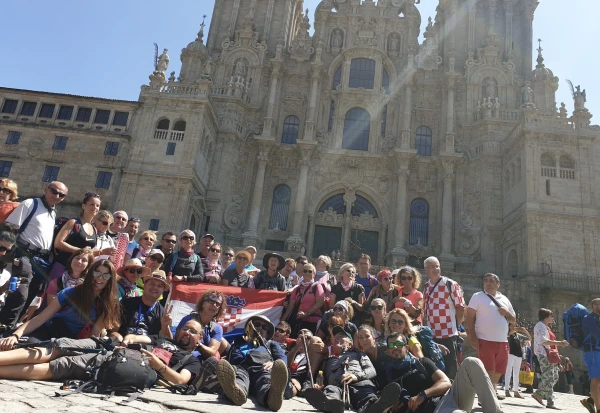
Prazen shared that a Danish man gave him this testimony a few years ago. “He said, ‘I am an atheist, and when I started to walk, I heard that a lot of people on the Camino have spiritual experiences, but I decided that was not for me. This attitude lasted three days… after three days I started talking to God.’”
Underlining the “huge spiritual hunger amongst the pilgrims” and convinced that “every individual yearns for the Gospel values,” Prazen said he wishes there were more initiatives by parishes to offer spiritual content and formation along the routes. He thinks simple gestures can be powerful.
Camino Croatia events
Besides providing support to people who want to walk the Camino Croatia, the Confraternity of St. James also wants to encourage the initiatives of the European Federation of St. James to revive the routes to Santiago across the continent.
In October 2023, the confraternity presented the entire Camino Croatia project to the European Parliament in Brussels. “The Camino is the first European cultural route proclaimed in 1997. It’s a way to promote the common European heritage and European identity,” Prazen explained to CNA.
This year, from May 2–5, the Adria Camino Festival, a major international event, will take place in Pula, a city in Croatia. Lecturers will come from many European bodies — the Council of Europe, the European Parliament, the European Commission, the European Federation of St. James, and many Camino institutions. The festival participants will also attend the world premiere of a new film about the Camino called “‘The Way, My Way” by Australian filmmaker Bill Bennett.
Prazen said the Croatian Confraternity of St. James still has much to do.
“Despite the fact that Camino roads are marked all over Europe, there are not many people walking those roads. For example, in Austria there [are] about a thousand annually, in Slovakia approximately 1,200, in Germany 17,000 — which is few for a country that size,” Prazen said.
In Spain, the official statistics are more than 400,000 pilgrims in 2023. However, “these statistics only count the people who arrive in Santiago, while a lot of people walk a week, a portion of the Camino, and continue the year after,” Prazen explained. “Realistically, it’s close to 1 million annually in Spain and maybe 30,000 across all other European countries.”
Prazen believes these numbers can grow. “The potential is much greater,” he said.




